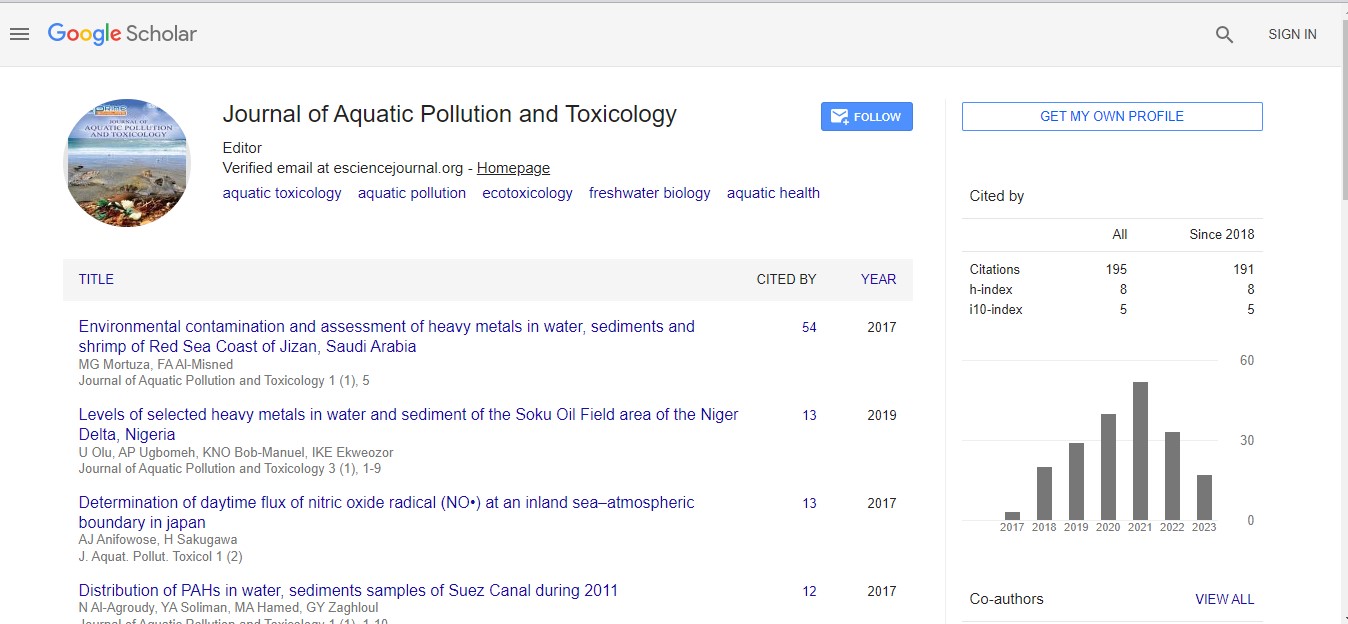Short Communication - (2024) Volume 8, Issue 4
Lakes: Vital Ecosystems and Sources of Beauty
Charlotte Davis*
Department of Aquatic Pollution, Cornell University, USA
*Correspondence:
Charlotte Davis,
Department of Aquatic Pollution, Cornell University,
USA,
Email:
Received: 02-Dec-2024, Manuscript No. IPJAPT-24-22020;
Editor assigned: 04-Dec-2024, Pre QC No. IPJAPT-24-22020 (PQ);
Reviewed: 18-Dec-2024, QC No. IPJAPT-24-22020;
Revised: 23-Dec-2024, Manuscript No. IPJAPT-24-22020 (R);
Published:
30-Dec-2024, DOI: 10.21767/2581-804X-8.4.31
Introduction
Lakes are some of the most captivating natural features on
Earth, providing essential resources for both wildlife and
human populations. They are bodies of water, typically inland,
that are surrounded by land. Lakes can vary in size, depth, and
water composition, and they serve as critical habitats, sources
of fresh water, recreational areas, and even key components in
climate regulation. This article explores the importance of lakes,
their ecological value, and the threats they face in the modern
world. Lakes are diverse ecosystems that support a wide range
of flora and fauna. They serve as home to numerous species of
fish, amphibians, insects, and aquatic plants. The waters in lakes
provide a habitat for both freshwater and migratory species,
many of which depend on the lake for reproduction, feeding,
and shelter. In addition to supporting wildlife, lakes also play
a crucial role in regulating the local climate and hydrological
cycle. They act as natural reservoirs, storing water during rainy
seasons and releasing it slowly into rivers and streams, which
helps to stabilize water levels in surrounding areas. This role is
particularly vital in regions prone to droughts, where lakes can
provide a critical water source during dry periods.
Description
Lakes also help filter water, trapping sediments and pollutants
from runoff before they flow into rivers or oceans. Aquatic
plants and microorganisms in lakes assist in breaking down
organic material, improving water quality and maintaining the
health of the ecosystem. Lakes can be classified based on their
formation, depth, and water chemistry. Some common types
of lakes include. Tectonic Lakes formed by the movement of
the Earthâ??s crust, tectonic lakes are often deep and large. The
Caspian Sea, the largest inland body of water in the world,
is a prime example. Glacial Lakes are created by the melting
of glaciers and are commonly found in colder regions. They
are often characterized by clear, cold water. Lake Baikal in
Siberia, the worldâ??s deepest freshwater lake, was formed by
ancient glaciers. Volcanic Lakes created in craters formed by
volcanic activity, these lakes are typically located in regions
with significant geological activity. Crater Lake in Oregon, USA,
is one such example. Artificial Lakes also known as reservoirs,
these lakes are human-made and typically created by
damming rivers for purposes like water storage, hydroelectric
power generation, or irrigation. Lakes also vary in their water
chemistry, which influences the types of organisms that can
thrive in them. Some lakes are freshwater, with low salinity,
while others are saline or alkaline, supporting specialized
species adapted to harsher conditions [1-4].
Conclusion
Humans have interacted with lakes for millennia, utilizing them
as sources of water for drinking, agriculture, and industry.
Lakes are also important for recreation and tourism, offering
opportunities for boating, fishing, swimming, and wildlife
watching. Climate change also impacts lakes by altering water
temperatures, which affects the organisms living within them,
and by increasing evaporation rates, which can reduce water
levels. Efforts to restore degraded lakes through clean-up
programs and regulations on industrial and agricultural runoff
have proven successful in some cases. As we face growing
environmental challenges, the protection of lakes becomes
even more critical to the well-being of the ecosystems they
support and the humans who rely on them. From supporting
biodiversity to regulating water resources and aiding climate
stability, lakes play a key role in maintaining the balance of life
on Earth.
Acknowledgement
None.
Conflict Of Interest
The author declares there is no conflict of interest in publishing
this article.
References
- Choudri BS, Awadhi T Al, Charabi Y, Nasiri N (2020) Wastewater treatment, reuse, and disposal-associated effects on environment and health. Water Environ Res 92(10):1595-1602.
[Crossref] [Google Scholar] [PubMed]
- Aditya L, Mahlia TMI, Nguyen LN, Vu HP, Nghiem LD, et al. (2022) Microalgae-bacteria consortium for wastewater treatment and biomass production. Sci Total Environ 838(Pt 1):155871.
[Crossref] [Google Scholar] [PubMed]
- Ahmad IZ (2022) The usage of cyanobacteria in wastewater treatment: Prospects and limitations. Lett Appl Microbiol 75(4):718-730.
[Crossref] [Google Scholar] [PubMed]
- Patyal V, Jaspal D, Khare K (2021) Materials in constructed wetlands for wastewater remediation: A review. Water Environ Res 93(12):2853-2872.
[Crossref] [Google Scholar] [PubMed]
Citation: Davis C (2024) Lakes: Vital Ecosystems and Sources of Beauty. J Aquat Pollut Toxicol. 8:31.
Copyright: © 2024 Davis C. This is an open-access article distributed under the terms of the Creative Commons Attribution License, which permits unrestricted use, distribution, and reproduction in any medium, provided the original author and source are credited.

